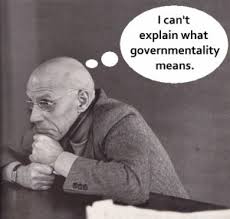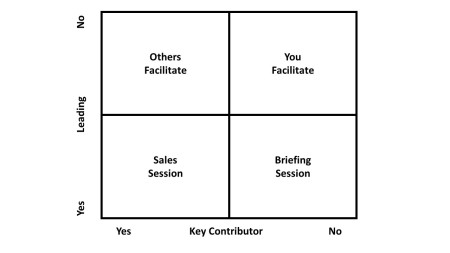 Two major governance failures in recent times highlight the importance of organisational culture in delivering a well-governed entity. Professor Ralf Müller has adapted the term ‘governmentality’ to describe the systems of governance and the willingness of the people within an organisation to support the governance objectives of the organisation’s governing body. When the willingness to be governed breaks down, as these two examples demonstrate, governance failures follow.
Two major governance failures in recent times highlight the importance of organisational culture in delivering a well-governed entity. Professor Ralf Müller has adapted the term ‘governmentality’ to describe the systems of governance and the willingness of the people within an organisation to support the governance objectives of the organisation’s governing body. When the willingness to be governed breaks down, as these two examples demonstrate, governance failures follow.
Toyota
The Lexus ‘unintended acceleration problem’ from 2009 has cost car manufacturer Toyota a staggering $1.2 billion fine to avoid prosecution for covering up severe safety problems and continuing to make cars with parts the FBI said Toyota “knew were deadly.” In addition to numerous civil actions and costs of reputational damage. The saga was described as a classic case of corporate culture that favoured the seemingly easy way out instead of paying the cost and doing the right thing. But, the actions of the people who magnified the problem by attempting to cover up the issues fundamentally contradicts the ‘Toyota Way’ that has guided Toyota since 2001. The Toyota Way has two core principles, respect for people and continuous improvement (kaizen).
Respect for people puts ‘people before profits’, and this is not an idle slogan. Following an Australian Government decision in 2014, all motor vehicle manufacturing in Australia will cease by 2018 (this affects General Motors Holden, Ford and Toyota). In February 2014 Toyota president Akio Toyoda personally came to Australia to tell his workers of the closure and Toyota’s commitment to its staff through training and other activities has maintained staff commitment at our local Altona plant with everyone working to make the “last car the best global car!”.
The difference between the “people first equals customer first” attitude demonstrated in the approach to closing the Altona plant where people are still being released for paid training to up skill for new roles and the ‘customer last’ approach that dominated the Lexus saga is staggering. The reaffirmation of the ‘Toyota Way’ may have been driven in part by the Lexus disaster but this does not explain why quality and customer service was allowed to fail so badly in the company that practically invented modern quality.
Volkswagen
A similar dichotomy is apparent in the Volkswagen diesel engine emissions scandal. A company renowned for engineering excellence, from a country renowned for engineering excellence allowed engineering standards to slip to a point where the cars being sold were illegal. The actual emissions were only part of the problem, Volkswagen engineers had developed a software program dubbed the ‘diesel dupe’ that could detect when the cars were being tested and change the engine performance to improve results. When the cars were operating under controlled laboratory conditions – which typically involve putting them on a stationary test rig – the device appears to have put the vehicle into a sort of safety mode in which the engine ran below normal power and performance thereby reducing emissions. Once on the road, the engines switched out of this test mode.
Governance issues
Neither of these issues involved ‘a few bad apples’ – the excuse used by most institutions to explain banking and financial scandals. They both required extensive management involvement and cover-ups or acquiescence. A substantial subset of both organisation’s management felt that doing the wrong thing was in the best interests of either themselves or the organisation (or both, at least in the short term). But the governing bodies of both organisations would seem to have maintained a commitment to their overall philosophy, the ‘Toyota Way’ and ‘Engineering excellence’. So what caused the governance failure?
Governmentality
One element that seems central to both of these failures was a breakdown in the willingness of managers to comply with the overall governance philosophy of the organisation which in turn caused the governance processes to fail; this is the domain of governmentality. Governance cannot be successfully imposed on a population that does not want to be governed!
 Governmentality is a term coined by philosopher Michel Foucault around 1980 and refers to the way in which the state (or another governing body) exercises control over, or governs, the body of its populace. The concept involves a complex series of two-way transactions involving:
Governmentality is a term coined by philosopher Michel Foucault around 1980 and refers to the way in which the state (or another governing body) exercises control over, or governs, the body of its populace. The concept involves a complex series of two-way transactions involving:
- the way governing bodies try to produce the people best suited to fulfil those governments’ policies;
- the organised practices (mentalities, rationalities, and techniques) through which people are governed, and
- the techniques and strategies by which a society is rendered governable.
In the same way as governments rely on most people complying with legislation most of the time, organisational governance mechanisms such as ‘project management offices’ and ‘portfolio management’ cannot function effectively without the cooperation of the people being governed. When governmentality breaks down and people no longer support the governance processes they cease to be effective.
The challenge facing every governing body, in every organisation, is in three parts
- Creating an authentic vision and mission for the organisation.
- Creating an effective governance system that supports the achievement of the vision.
- Creating and maintaining an ethical culture that embraces and supports governmentality.
Effective governance systems can weed out the bad apples and correct errors, but they cannot oversee the actions of every manager all of the time if the majority of people do not wish to follow the governance dictates, or actively work to subvert them.
Developing the ‘right culture’ by employing the right people (and importantly offloading the wrong people) starts at the top. The governing body needs to ‘walk the talk’, their CEO and senior executives need to model the desired behaviours and ‘doing the right thing’ needs to be encouraged throughout the organisation.
Achieving this requires authenticity and a holistic approach to the way the organisation functions; all of the elements need to work together cohesively. Achieving this is the primary responsibility and challenge for the ‘governing body’, in most organisations, the Board of Directors!
If you get the vision, mission and culture right, even major lapses such as the ‘Lexus unintended acceleration problem’ can be overcome. Despite the damage this caused, Toyota is now the world’s largest automotive manufacturer with a market capitalisation that is nearly double that of Ford and GM combined. This is also the reason why Objectives, ethics and culture are the top three elements in my model for the ‘Functions of Governance’.




 Posted by stakeholdermanagement
Posted by stakeholdermanagement 












